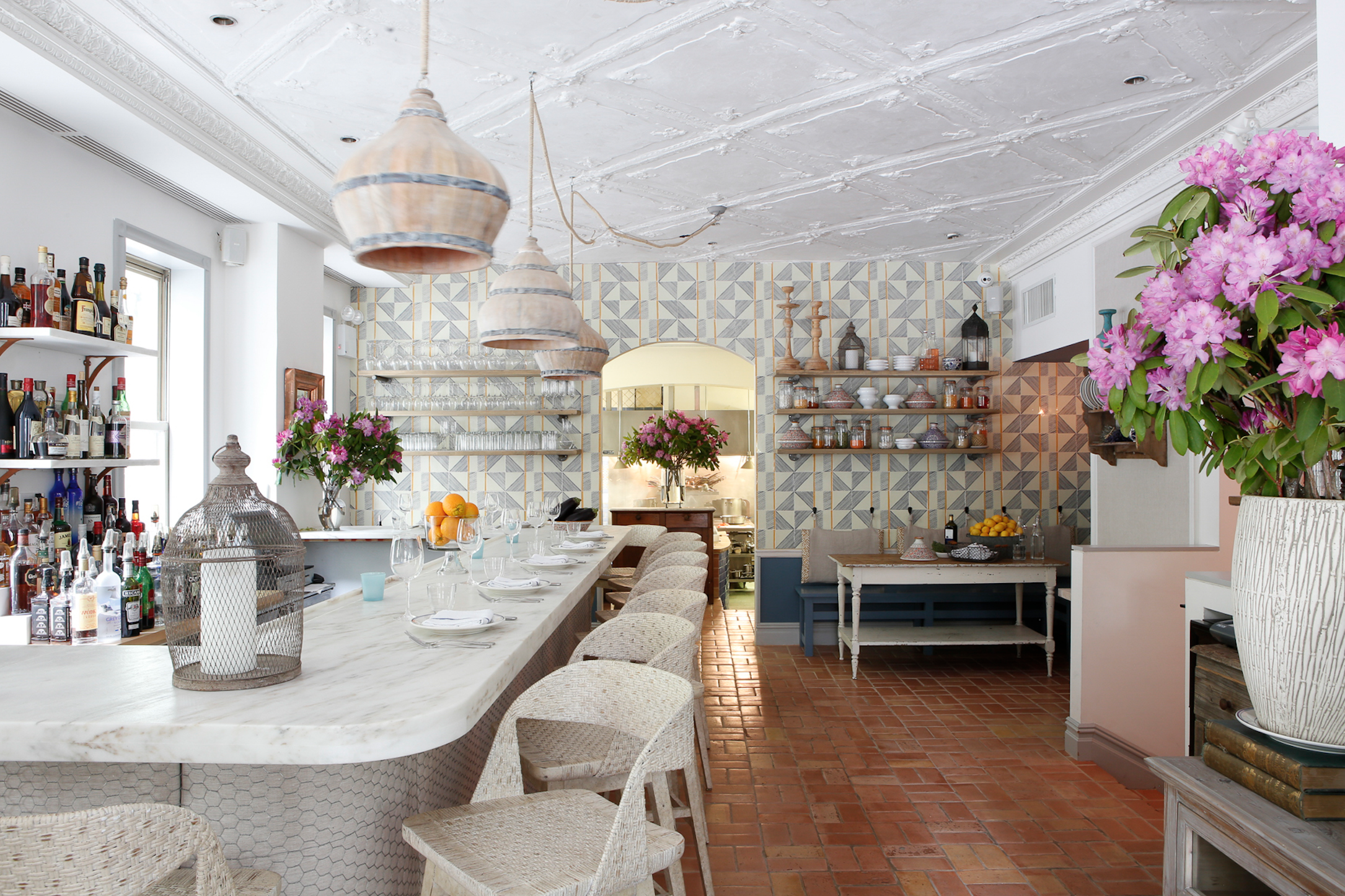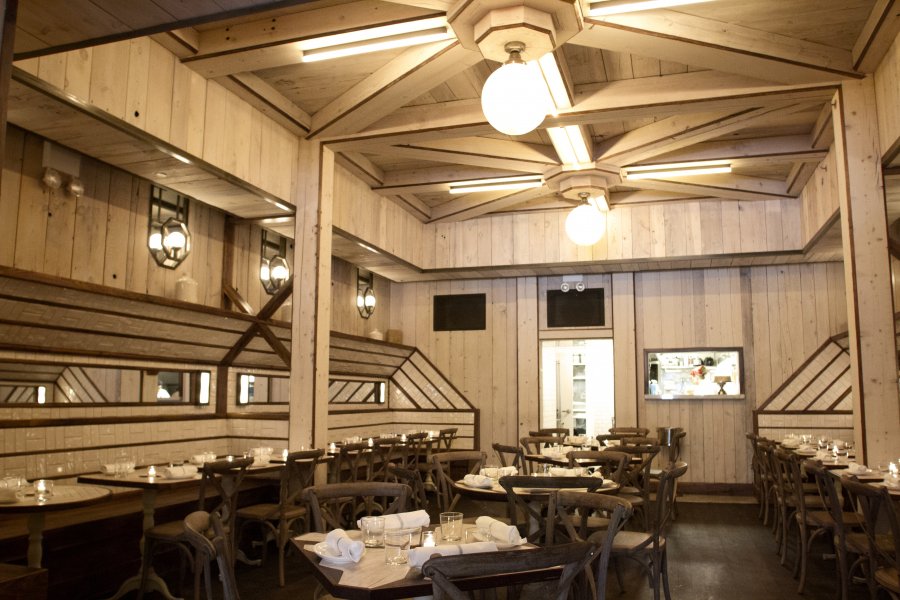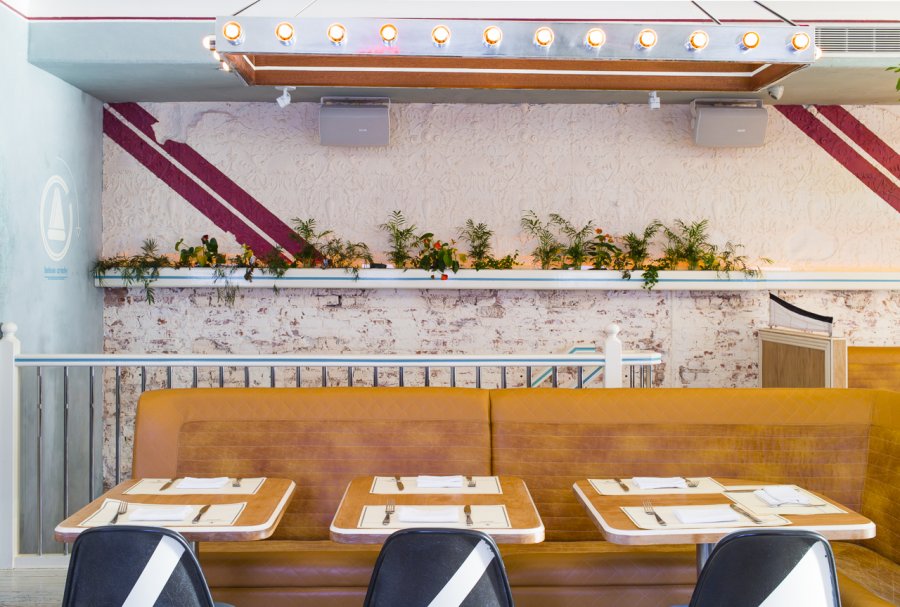2014 In Review: The Year In Restaurant Design
As we review the past year in dining and some of our favorite standout meals, there's much to be said about the memorability of a great restaurant experience. It's those crucial ingredients that go far beyond the food on your plate — design being one of the most significant.
Here are some of our favorite design trends from the past year, and the New York City restaurants that best showcase them right now.
1. Bold Tiles | Overtly graphic tiles have a reputation for being the scented candle of the restaurant world: there's a fine line between striking and smothering. At Gato, Bobby Flay's perenially packed ode to the Mediterranean, the hexagonal tiled floors channel that region with the same boldness as Flay's flavors. Similarly, Claudette transports diners to Provence by way of Morocco, with its many uses of tile throughout the space, most notably the cool, geometric-patterned wall tiles on display in a muted gray. Other examples include the recently opened Gordon Bar at SIXTY Soho, and the Bowery Meat Company.
2. Wood Elements | Wood as both a construction and a design material may be a perennial favorite amongst restaurant designers, which makes its distinctive use, like the concentric framed panels at Chris Cannon's Jockey Hollow, or Upland's curved-strip staircase wall, all the more noteworthy. Wood-fired bagels are the foundation for the inventive spreads and topping combos at Black Seed Bagels, an attribute underscored by heavy, wood-blocked interior. In addition to the chevron wood flooring and the long runner tables, a simple plank of honey-colored wood becomes overhead décor in Semilla's narrow dining room. Despite its recent closure, Telepan Local deserves recognition for its wood-heavy interior that managed to look rustic and futuristic at once.
3. Vive La France | Keith McNally's reinvention of the former Pulino's space into the classic, well-appointed Cherche Midi is indication enough that the city's ongoing love affair with French cafés and brasseries isn't waning anytime soon, but we're big fans of those that are taking their design cues from cities and regions other than Paris. Just look to Maman, which brings pastoral charms to Soho by way of the French countryside, Chicane (now closed) and its breezy, Monte Carlo–inspired sexiness, Dirty French's insouciantly decadent Moroccan-French mash-up, or the Marlton Hotel's Margaux, which satisfies all cravings for la vie française, country or city, depending on what room you're in.
4. Well-Branded | The discreet relationship between a restaurant's interior design and its branding (menus, signage, website design) is an important one worth noting — and yet it's rarely executed so well that guests might actually take notice and discuss. The one we couldn't stop talking about the most with every single visit was the comprehensive branding concept at Russ & Daughters' newly opened café — menus, placemats, cards, takeaway bags, and a new website that look fresh and modern, while seamlessly meshing with the 100-year-old heritage of the original appetizing shop. Other high-fives go to Morgenstern's ice cream parlour, which combines an all-white soda fountain–inspired space with a pitch-perfect, clean branding and a dose of humor (just look to the banana L on the register's "Cash only" sign), and Bar Primi for its similarly cheeky "pasta head" imagery and lively adaptation of the casual menu.
 At Claudette, designers Dolores Suarez and Caroline Grant of Dekar Design use graphic tile abundantly, in cool, muted colors. [/caption]
At Claudette, designers Dolores Suarez and Caroline Grant of Dekar Design use graphic tile abundantly, in cool, muted colors. [/caption]
 Telepan Local's wood-dense interior [/caption]
Telepan Local's wood-dense interior [/caption]
 Chris Tierney took a sexier route at since-closed Chicane, channeling the southern resort towns of Nice, Cannes, and Monte Carlo.[/caption]
Chris Tierney took a sexier route at since-closed Chicane, channeling the southern resort towns of Nice, Cannes, and Monte Carlo.[/caption]


